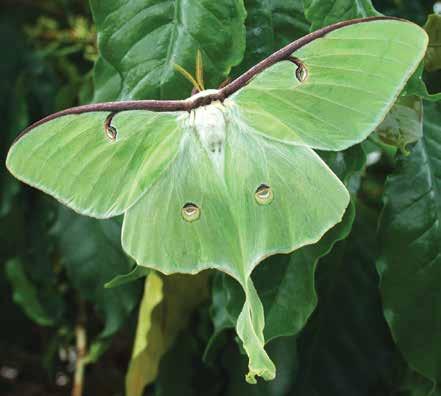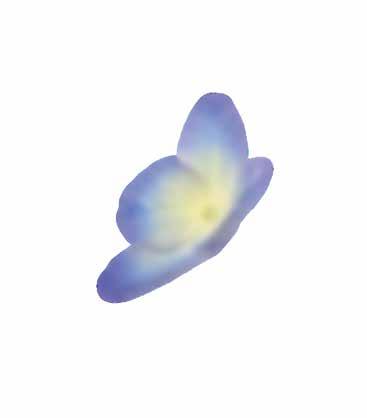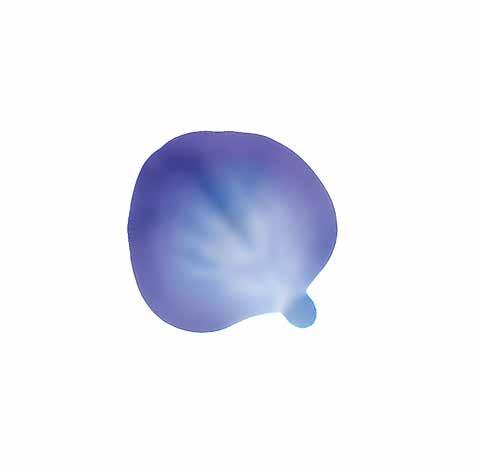
3 minute read
Kids Ask Dr. Bug about the curious things found in the garden
Do bugs have allergies?
Itchy, watery, and red eyes, stuffy or runny nose, and sneezing…all the signs that allergy season is here. To answer your question, we need to understand why animals (including humans) even get allergies, so let’s explore our immune system. Stay with me as this gets a little complicated. There are two parts to our immune system: innate and adaptive. Our innate immune system is something we are born with and includes special cells that attack germs. The adaptive immune system learns to recognize and destroy new germs that can make us sick, so that we don’t get as sick next time. While this is great for our health, allergies are caused by an overactive adaptive immune system when it comes across a substance, such as pollen.
Insects have an innate immune system, but they do not have an adaptive immune system. Insects can get sick, and their immune system can sometimes help them get well. However, without an adaptive immune system, they cannot get allergies, stuffy noses, or watery eyes.
On the other hand, insects can cause allergies in humans. Some people are allergic to mosquito bites, bee and wasp stings, and the chitin from insects exoskeletons or their frass (bug poop) that can get in the air. People can even have food allergies to insects and their relatives, sea crustaceans, like lobster and shrimp.
Do all bugs float?
No, not all insects can float. Some species of beetles and flies can float on water due to the presence of small air pockets on their bodies. Some bugs, such as water striders even walk on water due to special hairs on their legs that push water away (called hydrophobic hairs). Also, because water molecules naturally stick to each other, it creates something like an invisible covering across the surface, called surface tension, that must be broken for things to sink. Insects are small and light enough that many of them will float initially, but if they poke through the surface, unless they have those special tools, such as air pockets or hydrophobic hairs, they will go under the surface of the water.
Do moths chase the moon?
Contrary to popular belief, moths do not chase the moon. The behavior of moths flying around lights or other bright objects, is a result of their natural navigation system getting confused by artificial light sources.
Moths and other insects use the moon and stars to navigate by keeping them at a fixed angle to their bodies as they fly. This allows them to fly in a straight course even if they come across obstacles or the wind changes direction.
Artificial lights, such as streetlights or porch lights, can confuse the moth’s navigation system by creating a stronger, closer light source than the moon or stars. The moth will fly towards the light, believing it to be the moon, and become disoriented and trapped in the light’s glow.
How do I care for a pet bug?
Caring for a pet insect can vary depending on the insect species, so it’s important to research the specific needs of the type of insect you plan to keep as a pet. Here are some general guidelines:
Housing: Provide a suitable enclosure that is large enough for the insect to move around in and air can get in easily. The enclosure should have a secure lid to prevent the insect from escaping. Depending on the species, the container may need soil or sand to mimic the insect’s natural habitat.
Food and water: Provide the appropriate food and water for the species of insect you are keeping. Some insects, such as crickets or mealworms, can be fed insect food you can buy, while others may require specific types of plants you will need to find. Water can be provided through a shallow dish with a sponge or cotton ball in it, or through a misting system.
Temperature and lighting: Ensure that the enclosure is kept at the appropriate temperature and lighting for the insect species. Some arthropods, such as tarantulas or scorpions, require warm temperatures and low lighting, while others may prefer cooler temperatures and brighter lighting.
Handling: Depending on the species, some insects may be able to be handled, while others should not be touched. It’s important to research the specific handling requirements for your pet insect to prevent injury to both you and the insect.
Cleaning: Regularly clean the enclosure. Remove any uneaten food and replace with fresh soil or sand as needed.
Overall, caring for a pet insect can be a rewarding experience, but it’s important to research the specific needs of the species you plan to keep ensuring that you are providing the best care possible. Check out this website for information about specific insect pets: https:// entomology.ca.uky.edu/content/ kentucky-bugs-care-and-feeding.
Do you have questions for Dr. Bug? Send them to ReallT@Missouri. edu or https://bit.ly/KidsAskDrBug. Please include your name and age. To help me learn what you learn from this column, consider filling out this survey: https://bit.ly/ KidsAskDrBugSurvey.



















